Search results for 'yellow'
-
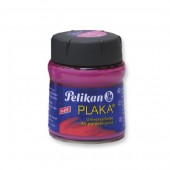
Pelikan Plaka 50 ml
Starting at: £3.50
Adheres to most porous surfaces. For use on rigid surfaces only. Some colours can be used when gilding to imitate traditional clay colours. While stocks last. * Please note that this range has sadly been discontinued. The below is 'while stocks last' and while we try to keep our inventory up to date, it's possible that we don't have all of these colours available. Learn More -
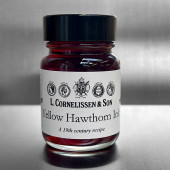
Cornelissen Historical Inks, Yellow Hawthorn Ink 30ml
£6.50Made from organic hawthorn berries collected from Cambridgeshire, this bright, warm yellow ink can be layered in order to produce deeper shades. It is not fully lightfast or waterproof due to the presence of organic materials.
Not suitable for fountain pens. Learn More -
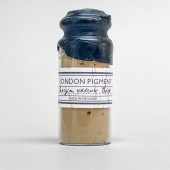
London Pigment, Georgian Yellow Brick Pigment
£18.00This warm earthy yellow is made from the quintessential London ‘stock brick’ of the 18th and 19th centuries. This pigment has a medium grain size and is transparent. ****Please note, these pigments are artisan made in small batches. Please email info@cornelissen.com for availability**** Learn More
-
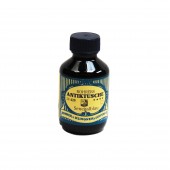
Rohrer & Klingner Antique Ink
Starting at: £10.20
The Rohrer & Klingner Traditional Ink range provides 18 colours of high luminance and brilliance, suitable for use with dip pens, brushes, fountain pens, and even airbrush devices. They can be used to produce crisp edges or more painterly washes. They have an acrylic resin base, with a high pigment content, and are completely intermixable. They can also be used in conjunction with Rohrer & Klingner's Drawing and Calligraphy range, to create an even more extensive range of tones. Learn More -
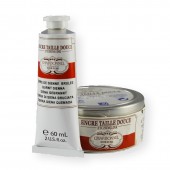
-
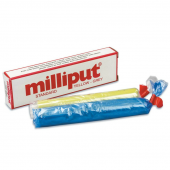
Milliput
Starting at: £4.80
2 part, epoxy resin moulding material for prepairing surfaces and mouldings. Store in a cool, dry place. Shelf life is 2-3 years. Hardener may yellow if it dries out. This is due to the resin leeching out to the surface of the stick. If this happens, kneading with fingers will make it smooth and white again. Learn More -
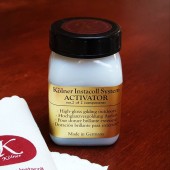
Instacoll Gilding System
Starting at: £6.85
Kölner Instacoll is a two-part system, consisting of a base coat and activator, that can be used on nearly all suitably prepared substrates to create weather-resistant, high gloss interior and exterior gilded surfaces. The Instacoll Tool is a double-ended tool with shaped tips made of elastic rubber, designed for pressing gold and silver transfer leaf into indentations when gilding uneven surfaces. The Instacoll Chiffonnette is an extra soft, lint-free cloth, used for polishing and burnishing surfaces gilded with Instacoll. *PLEASE NOTE - COLOURS OF THESE PRODUCTS MAY VARY SLIGHTLY FROM PRODUCTS PICTURED* Learn More -
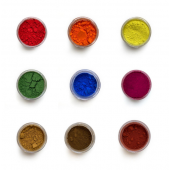
-
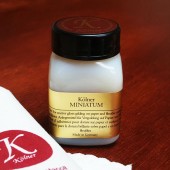
Miniatum
Starting at: £16.60
Size for high gloss gilding on paper, degreased vellum, leather and flexible surfaces. *Please note - Colours of these products may vary slightly from those depicted in the photograph* Learn More -
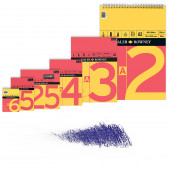
Daler Red and Yellow Spiral Bound
Starting at: £5.20
25 sheets of 150 gsm acid free cartridge paper. Learn More -
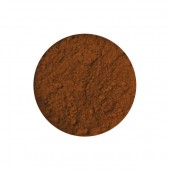
Translucent Yellow Oxide Pigment
Starting at: £7.00
Translucent Yellow Oxide (PY42). Artificial mineral pigment, hydrated ferric oxides. Transparent and very lightfast. Stable in all media, medium drying rate in oil. Toxicity B. Learn More -
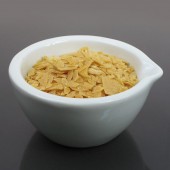
Carnauba Wax Yellow
Starting at: £6.50
Carnauba Wax is the hardest wax commonly used in the production of artists' materials, with a melting point of 83-86°c. It is derived from a tree native to South America, and is available in a natural colour (grey), or a refined colour (pale yellow). Small amounts of carnauba wax are commonly used in both oil painting mediums and encaustic painting, usually in conjunction with beeswax to add toughness, durability and sheen to the paint film. It creates an inflexible surface, so works best on rigid supports such as gesso panels, and it should be noted that it will raise the melting point of encaustic mixtures. It can produce a glossy finish; as such it is used in waxes and polishes for shoes, cars, musical instruments, furniture, and wooden floors, especially when mixed with beeswax and turpentine. Learn More -
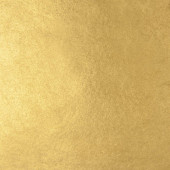
Cornelissen 80 Yellow Gold Leaf 22 ct
Starting at: £54.90
Yellow Gold Leaf 22 ct, 80 x 80 mm. Book of 25 leaves. Coverage per book is 0.16 m2 (1.69 sq. feet) Learn More -
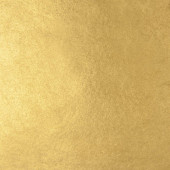
-
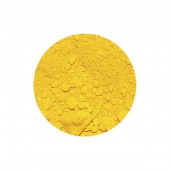
-
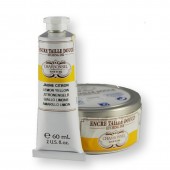
-
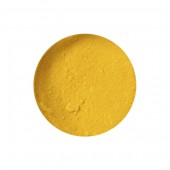
Cadmium Yellow Light Pigment
Starting at: £6.20
Cadmium Yellow Light Pigment (PY37). Synthetic Inorganic pigment. Opaque. Good tinting strength. Excellent Lightfastness. Low oil absorption with slow drying rate. Suitable for all media. Good acid and alkali resist. Exterior application not advised as discoloration occurs. Used since 19th Century. Toxicity B/C. Learn More -

Cadmium Yellow Middle Pigment
Starting at: £6.30
Cadmium Yellow Middle Pigment (PY37). Synthetic Inorganic pigment. Opaque. Good tinting strength. Excellent Lightfastness. Low oil absorption with slow drying rate. Suitable for all media. Good acid and alkali resist. Exterior application not advised as discoloration occurs. Used since 19th Century. Toxicity B/C. Learn More -
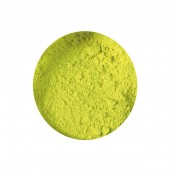
Cadmium Yellow Lemon Pigment
Starting at: £4.50
Synthetic Inorganic pigment. Opaque. Good tinting strength. Excellent Lightfastness. Low oil absorption with slow drying rate. Suitable for all media. Good acid and alkali resist. Exterior application not advised as discoloration occurs. Used since 19th Century. Toxicity B/C
Learn More -
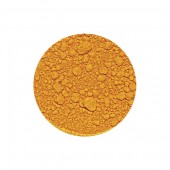
Cadmium Yellow Deep Pigment
Starting at: £7.40
Cadmium Yellow Deep Pigment (PY37). Synthetic Inorganic pigment. Opaque. Good tinting strength. Excellent Lightfastness. Low oil absorption with slow drying rate. Suitable for all media. Good acid and alkali resist. Exterior application not advised as discoloration occurs. Used since 19th Century. Toxicity B/C. Learn More -
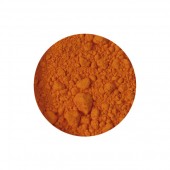
Cadmium Yellow Orange Pigment
Starting at: £4.50
Cadmium Yellow Orange Pigment (PY108) also known as Pyramid Yellow. Organic pigment. Opaque to Semi-opaque. Good tinting strength. Excellent Lightfastness. Medium drying rate. Suitable for all media except Lime-fresco. Toxicity B/C Learn More -
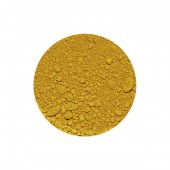
Mars Yellow Pigment
Starting at: £4.50
PY42
Mars Yellow is an artificial mineral pigment, a synthetic iron oxide. Mars colours in general replace many natural earth colours to provide pigments without impurities and with great opacity. It has a good tinting strength, is lightfast and stable in all media, and has a medium drying time in oil, creating a strong, flexible paint film.
Toxicity: B
Limeproof
Learn More -
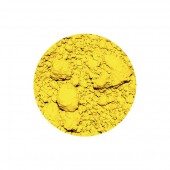
Cobalt Yellow Pigment
Starting at: £8.80
Cobalt Yellow Pigment, Aureolin (PY40). Synthetic Inorganic pigment (Potassium Cobaltinitrate). Transparent. Good tinting strength. Very good Lightfastness. Medium to high oil absorption. Suitable for all media except Lime-fresco. Used since mid 19th Century. Toxicity C.
Please note, unfortunately we are not able to send this product outside the UK.
Learn More -
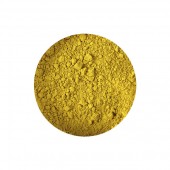
Yellow Ochre Pigment
Starting at: £4.00
PY43
Yellow Ochre is a natural earth pigment that has been in use since prehistoric times. It is derived from iron-rich clay deposits that are present all over the world; our Yellow Ochre comes from the hilly regions around Verona, Italy. As a pigment, it is semi-opaque, extremely lightfast, and stable in all media. It has a medium to slow drying rate in oil, creating a tough, flexible paint film. Yellow Ochre is similar in composition to Raw Sienna, but whereas Yellow Ochre contains a higher proportion of clay, Raw Sienna contains a higher proportion of silica. As a natural material, the exact colour and qualities of the resultant pigments can vary, but generally this compositional difference creates a paler, more opaque Yellow Ochre, and a darker, more transparent Raw Sienna.
Toxicity B
Learn More -
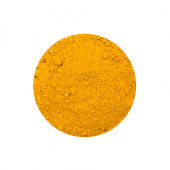
-
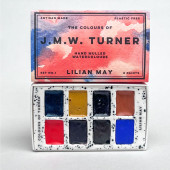
Lilian May, J.M.W. Turner Watercolour Box Set, 8 Wells
£40.00Call to Order
Box Set Dimensions 9 cm x 5.5 cm Ultramarine PB29 Burnt Umber PBR6 Genuine Madder NR9 Vermilion PR4, PY1, W21 Mars Orange PY42, PR10 Indigo NB1 Yellow Ochre PY43 Prussian Blue PB27. Learn More -

Schmincke Horadam Naturals Set Earths
£49.00Call to Order
Schmincke Horadam Naturals Set Earth Pigments 5 x 15 ml Celadonite Yellow Ochre Lalvarit Violet Caucasus Earth Green Slate Learn More -
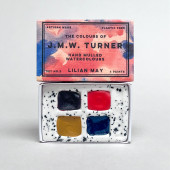
Lilian May, J.M.W. Turner Watercolours, Matchbox Set, 4 Wells
£20.00Call to Order
Matchbox Set Dimensions 5.5 cm x 3.5 cm Prussian Blue PB27 Yellow Ochre PY43 Vermilion PR4, PY1, W21 Genuine Madder NR9 Learn More -
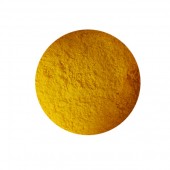
Orpiment Pigment
Starting at: £12.75
Call to Order
PY39
Orpiment, also called King's Yellow, is a mineral pigment containing naturally occurring sulphide of arsenic. Its high toxicity, and the prevalence of cadmium pigments, means that it is largely obsolete outside the field of restoration. It works best bound in oil or egg tempera, but it is not reliably permanent. Larger quantities are available by request.
Toxicity D
PERMITTED USES Over 18s only. Proof of age required. Restoration of art works and protected buildings when alternatives unsuitable.
IMPORTANT Please refer to the MSDS (Material Safety Data Sheet) below. Dispose of product as hazardous waste.
SHIPPING Please note, we are not able to send this product outside the UK.
Learn More -
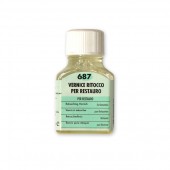
Maimeri Retouching Varnish for Restoration 75 ml
£8.80Call to Order
Very fast drying, light varnish for retouching and restoration. Moderately shiny, does not yellow (Ketonic resin 22% and White Spirit). Learn More





